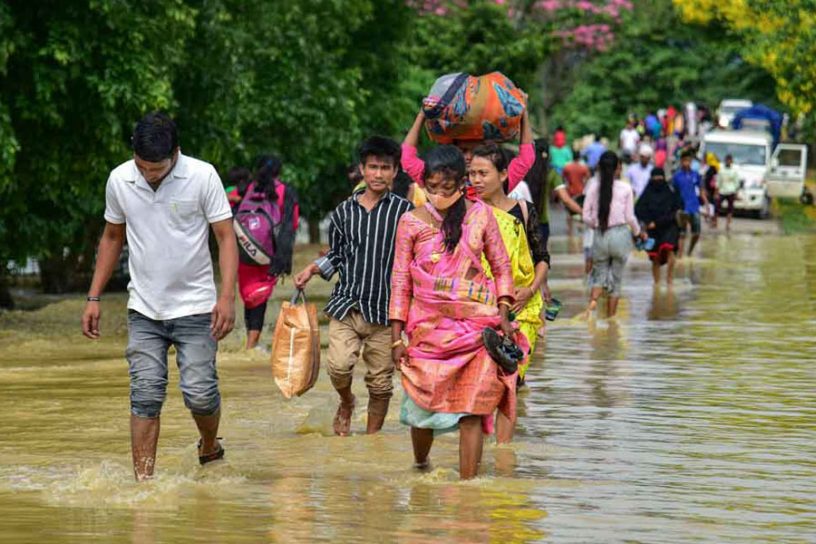
This article juxtaposes Assam’s history with floods, erosion, and extreme rainfall since 2012–2013 with people’s mobility as an emerging form of adaptive capacity.
Author
Sneha Krishnan, Associate Professor, Jindal School of Environment and Sustainability, O.P. Jindal Global University, Sonipat, Haryana.
Summary
Social vulnerabilities are exacerbated as a result of human mobilities in the face of climate-related disasters. Framing these mobilities as a response to disasters masks the underlying systemic issues but helps to explore and understand the connections between climate change, disasters, and displacement, and particularly helps to identify which internal displacement patterns emerge as either adaptive or maladaptive strategies.
Using a case study approach, this article juxtaposes Assam’s history with floods, erosion, and extreme rainfall since 2012–2013 with people’s mobility as an emerging form of adaptive capacity. It contextualises key concepts of gender justice, using them to understand gendered recovery processes following disasters.
This article advances the concepts of justice and migration by looking at the role and impact various patterns of mobilities have on vulnerable groups, particularly women.
While there is an increasing body of research examining the climate change–migration nexus, what is needed is a focus on understanding internal displacement using an environmental and gender justice lens.
This approach must include debate and further research on internal displacement, and strengthening policy approaches to make them both climate resilient and migrant inclusive.
Published in: Jindal Global Law Review
To read the full article, please click here.


